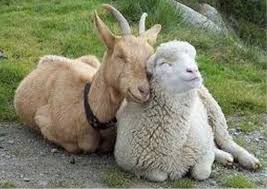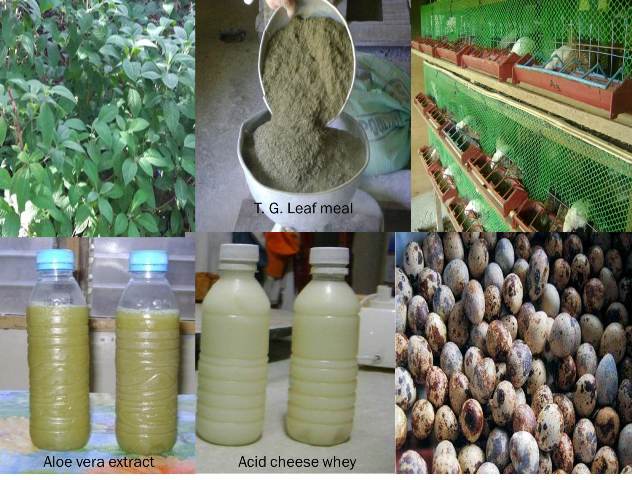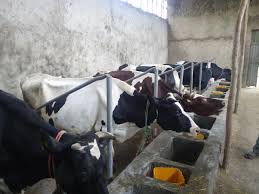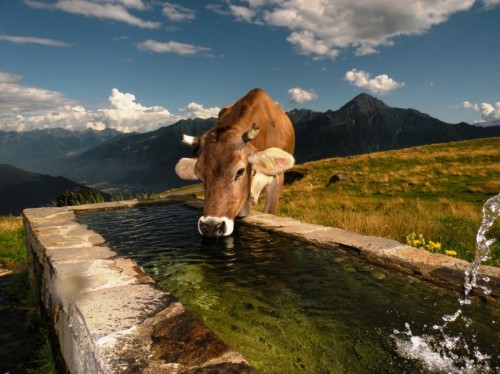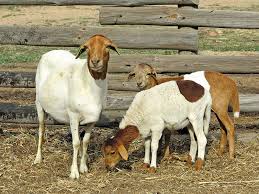Previous issue | Next issue | Archive
Volume 7 (6); November 25, 2017 [Booklet]
Prevalence and Risk Factors of Gastrointestinal Nematode Parasites of Shoat in Andabet District, North West Ethiopia.
Demewez G, Birhan M and Awoke T.
Online J. Anim. Feed Res., 7(6): 134-137, 2017; pii: S222877011700020-7
Abstract
A cross sectional study on gastrointestinal parasite of small ruminants was conducted from September, 2013 to January, 2014 in Andabet district. The objective this studies to determine the prevalence of infestation in sheep and goats. The overall prevalence of gastrointestinal helminthes parasite infestation in sheep and goat were 72.5%. The prevalence of gastrointestinal helimenth in sheep and goats were 78.4% and 63.3% respectively. Sheep was more commonly affected than goat this showed that statistically significant difference (P < 0.05) between species. Different prevalence was observed between female (78.0%) and male (71.8%), but there was no statistically significant difference (x2=0.83, P > 0.05). Based on age higher prevalence (82.3%) observed in animals of below 5 years old while the lowest prevalence (66.4%) observed in greater than ten years old and the difference between the prevalence among the different age groups was statistically significant (x2=6.9, P < 0.05). The study shows that gastrointestinal (GIT) parasite was a major problem of small ruminant in the study area. Therefore, comprehensive study on GIT parasite, cost effective strategic treatment and awareness creation to the smallholder should be instituted in the study area.
Keywords: Gastrointestinal, Goat, Risk factor, Prevalence and Sheep
Effects of Trichanthera gigantea leaf meal on the growth and production of quails supplemented with Aloe vera extract and acid cheese whey.
Bejar F.R.
Online J. Anim. Feed Res., 7(6): 138-144, 2017; pii: S222877011700021-7
Abstract
This study was conducted to evaluate the effects of Trichanthera gigantea leaf meal on the growth and egg production of quails supplemented with Aloe vera extract and acid cheese whey in drinking water. A total of 300 quails distributed to 15 treatments with four replications using randomized complete block design (RCBD). Levels of TGLM were T0 (0%), T1 (15%) and T2 (25%), while the water supplements included; 0, 15 and 25 ml per gallon of water of AVE and ACW respectively. Results revealed that birds fed 15% (T1) T. gigantea leaf meal in the diet performed well in terms of final weight gain and productions. Feed consumption, feed conversion ratio values and water consumption increased in birds fed with 15% T. gigantea than the control. Birds with 15% and 25% T. gigantea in their feed have delayed point of lay than those in the control. The economic analysis showed that birds fed 15% T. gigantea leaf meal with 25 ml ACW had higher return on investment and higher net benefits than other treatments. Results suggests that 15% T. gigantea leaf meal in the diet of quail with aloe extract and acid cheese whey supplementation can improve growth and egg production performance in quails.
Keywords: Quail, T. gigantea leaf meal, Aloe vera extract, Acid cheese whey, Plant proteins.
Assessment of major livestock feed resources and feeding systems in Bench-Maji zone; South Western part of Ethiopia.
Feyisa T and Dejen M.
Online J. Anim. Feed Res., 7(6): 145-153, 2017; pii: S222877011700022-7
Abstract
The study was conducted with the objectives of assessing major livestock feed resources and its utilization practices in Bench-Maji Zone, South Nations, Nationalities, Peoples Region (S.N.N.P.R). The average farm size owned per household (hh) in Surma (3.03 ha) were significantly higher (P < 0.001) than the average farm size owned by Shey-Bench (2.48ha) and Semen Bench (1.95ha). Farm size allocation to crop production in Surma, Shey-Bench and Semen Bench was 2.49, 1.96 and 1.15 ha, respectively. Out of the total land owned per household; about 0.56, 0.18 and 0.29, and 0.00, 0.21 and 0.07 hectares were allocated for grazing and forage, respectively in Surma, Shey-bench and Semen Bench. The number of cattle and goats reared per hh in Surma Woreda was significantly higher (P < 0.05) than that of Shey-bench and Semen Bench. Similarly, there was significantly large number of chickens in Surma woreda than Shey-bench. But, there were no significance difference for chicken’s production in Surma and Semen Bench woredas. Contrast to chickens; there were significantly higher sheep and equine production in Shey-Bench than Semen Bench and Surma woredas. Moreover, there was no Equine production in Surma woreda might be due to the feeding habit of Equines in addition to prevalence of disease. The major feed resources to livestock in the study area were: natural pasture, crop residues, cultivated pasture, hay, left over of banana and/enset and taro leaf. Out of these, Natural pasture was the primary source of feed to animals in the study area. The most limiting constraint to livestock was shortage of grazing land and healthy problems.
Keywords: Livestock, Feed resource, Feeding system, Bench-Maji zone
A review on milk production and reproductive performance of dairy cattle in Ethiopia.
Endris M.
Online J. Anim. Feed Res., 7(6): 154-160, 2017; pii: S222877011700023-7
Abstract
This review was conducted to review the information on milk production (lactation milk yield, lactation length and milk composition) and reproductive performance (age at first calving, calving interval and number of service per conception) of dairy cattle in Ethiopia. The mean values of lactation milk yield (LMY) ranges between 494 to 809 kg with lactation length (LL) of 128 to 353 days for indigenous breeds, 2343 to 1583 kg with lactation length of 275 to 448 days for crossbreed cows, and 1583 to 3796 kg with lactation length (LL) of 276 to 362 days for exotic breeds respectively. Both LMY and LL were significantly affected by breed, parity and year of calving. In general, F1 crosses produce more milk compared to F2 crosses and indigenous breeds. Milk from Boran cows had high percentage of milk fat, protein and total solids than Frisian cross breed cows. However, milk from Friesian crossbreed dairy cows had high content of milk lactose than Boran cows. Mean values of AFC for indigenous breed’s ranges between 30.3 to 50.0 months while Calving interval (CL) ranges between 11.8 to 15.6 months respectively. The mean values of AFC range from 29.1 to 55.4 months for Holstein Friesian crosses and 38.8 to 46.9 months for Jersey crosses. The second filial generation (F2) had longer AFC and CI than those from first filial generation (F1) crosses. From this review it can be concluded that crossing local cattle with exotic breeds improved milk production but long calving intervals were observed as exotic blood increase.
Keywords: Crossbred, Milk production, Reproductive, Ethiopia
Assessment of indigenous sheep production practice, and markete opportunity around gondar area, Ethiopia.
Birhan M, Mersha D, Taha M and Tameru T.
Online J. Anim. Feed Res., 7(6): 161-166, 2017; pii: S222877011700024-7
Abstract
Sheep are relatively cheap asset purchased by a young poor family recovering from disasters, drought and/or war. The study was conducted in Gondar town which will found in Amhara Regional State in North West Ethiopia on sheep production performance, marketing and management practice. The result showed that 70 % of the respondents replied that separate house from family and other cattle is used 30% can used not separate from family. Production system in the study area dominated by semi intensive system showed, (80%) with the major housing system in the study area is separate from family and other cattle (7% and 30%) not separate from family. Feed of the sheep Grass, straw with atela and nug cake cover 41.7 % 40.0 % and 18.3 respectively. Water sources of sheep are river (15%), pond (3.3%) and tape water (81.7%) from this majority of them use tape water (81.7%). The major disease in the study area is internal parasite” that was reported by 33 .3 % of respondent. The others are fasciola (28.3%), mastitis (20.0%) and dystocia (8.3 %). The method of sheep selling locally used by eye estimation around (76.7%) weight of live animal (18.3%) and (5.0%) both by eye estimation and live weight of animal. The result should that there is land shortage, as a result the governmental and nongovernment organization should provide input, training and skill development programs to develop extensive production system in to semi-intensive and then intensive progressively.
Keywords: Indigenous Sheep, Marketing, Management Practice.
Previous issue | Next issue | Archive
This work is licensed under a Creative Commons Attribution-NonCommercial 4.0 International License.
| < Prev | Next > |
|---|

